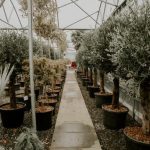Are you seeking garden design ideas for large gardens? A sprawling outdoor space offers endless opportunities for creativity and functionality. From creating distinct zones to incorporating water features and hardscaping, the potential for a stunning landscape is unlimited. In this article, we will explore various elements of designing a large garden to help you make the most of your outdoor oasis.
Large gardens are not just spaces; they are canvases waiting to be painted with lush greenery, colorful blooms, and captivating design elements. The sheer size allows for diverse planting schemes, unique features, and the ability to create different atmospheres throughout the garden. By carefully planning and utilizing the space effectively, you can transform a large garden into a stunning and functional retreat that reflects your personal style and meets all your outdoor living needs.
Whether you have acres of land or an expansive backyard, designing a large garden requires thoughtful consideration of layout, plant selection, hardscaping, and maintenance. With the right approach, you can achieve a harmonious balance between form and function that enhances the beauty of your property while providing practicality for relaxation and entertaining. In this article, we will delve into various aspects of designing large gardens to inspire you in transforming your outdoor space into an inviting oasis.
Planning for Success
When embarking on a garden design project for a large space, it’s crucial to start with a clear plan in mind. Assessing the space and setting goals are essential steps to ensure that the garden meets both your practical needs and aesthetic desires. Here are some key considerations for planning the design of a large garden.
Assessing the Space
The first step in planning a large garden is to take stock of the space you have available. Consider the topography, soil quality, sun exposure, and existing vegetation. Understanding these factors will help you make informed decisions about plant selection, hardscaping, and other features.
Setting Goals
Before diving into specific design elements, it’s important to establish your goals for the garden. Are you looking to create an outdoor entertaining area, a serene retreat, or a productive vegetable garden? Identifying your priorities will guide the design process and ensure that the end result aligns with your vision.
Design Principles for Large Gardens
Once you have assessed the space and set clear goals, it’s time to consider design principles that are particularly relevant to large gardens. Scale, proportion, balance, and focal points are all critical aspects of creating a harmonious and visually appealing outdoor space. Embracing these principles will help you make informed decisions about layout, plant selection, hardscaping, water features, and more.
By carefully assessing the space and setting clear goals at the outset of your garden design project for a large garden you’ll set yourself up for success as you move into subsequent stages of planning and implementation.
Creating Zones
When it comes to garden design ideas for large gardens, creating zones is key to making the most of the space and allowing for various functions. Here are some ways to utilize different areas in your large garden:
- Entertaining Area: Designate a section of your garden for entertaining guests, whether it’s a spacious patio with outdoor furniture or a cozy fire pit area surrounded by seating.
- Relaxation Space: Create a tranquil oasis in your garden by incorporating a peaceful nook with comfortable seating, hammocks, or even a meditation area with serene landscaping and water features.
- Play Area: If you have children or enjoy outdoor games, dedicate an area for play that includes equipment such as swings, slides, or space for activities like lawn games.
- Vegetable and Herb Garden: Utilize a portion of your large garden for growing your own fruits, vegetables, and herbs. Consider raised beds or dedicated rows for easy maintenance and organization.
By incorporating these zones into your garden design, you can make the most of your large space while catering to different functions and activities. Remember to consider the layout and flow of each area to ensure they harmonize with one another while serving their distinct purposes.
Plant Selection
When it comes to garden design ideas for large gardens, plant selection is crucial in achieving the right scale and impact. Large gardens offer a unique opportunity to play with different sizes, shapes, and textures of plants, creating a visually stunning landscape. One of the key considerations when selecting plants for a large garden is to choose species that can fill up the space without overwhelming it.
To create visual interest and depth in a large garden, it’s important to incorporate a mix of trees, shrubs, perennials, and annuals. Using a variety of plant heights and shapes will help fill the vertical space in the garden and prevent it from looking sparse. Additionally, choosing plants with different bloom times ensures that there’s always something flowering throughout the seasons, keeping the garden vibrant year-round.
In terms of impact, large gardens provide an opportunity to use statement plants as focal points. Larger trees or ornamental grasses can be strategically placed to draw the eye and create visual interest. When selecting plants for scale and impact in a large garden, it’s essential to consider both their mature size and how they will interact with other elements in the landscape.
| Plant Variety | Characteristics |
|---|---|
| Japanese Maple (Acer palmatum) | An elegant tree with vibrant foliage that adds color and texture |
| Russian Sage (Perovskia atriplicifolia) | Tall perennial with aromatic blue flowers that attracts pollinators |
| Hydrangea paniculata ‘Limelight’ | A showy shrub with large conical flower heads that bloom late summer |
Hardscaping
When it comes to garden design ideas for large gardens, hardscaping plays a crucial role in creating an organized and visually appealing outdoor space. Integrating paths, patios, and structures is essential for defining the different areas within a large garden and enhancing its overall functionality. Here are some key elements to consider when hardscaping a large garden:
- Paths: Designing well-planned pathways throughout the garden not only adds structure and organization but also guides visitors through the space. Utilizing materials such as natural stone, gravel, or pavers can create interesting textures and visual interest. Incorporating curves and straight lines can also add dimension to the garden design.
- Patios: Creating outdoor living areas within a large garden provides opportunities for relaxation and entertainment. When designing a patio, it’s important to consider its size, location in relation to the house, and its connection to other garden features. Materials like flagstone or concrete pavers can be used to construct durable and visually appealing patios.
- Structures: Introducing structures such as pergolas, arbors, or trellises can add vertical interest and provide support for climbing plants. These elements not only serve as focal points in the garden but also offer shade and privacy. When incorporating structures into garden design, it’s essential to ensure they complement the overall style and scale of the space.
Incorporating hardscaping elements into garden design ideas for large gardens helps create a cohesive and functional outdoor environment. By carefully planning paths, patios, and structures, homeowners can transform their expansive landscapes into inviting and dynamic spaces for enjoyment and relaxation.
Water Features
Types of Water Features
There are various types of water features that can be incorporated into large garden design ideas for large gardens. These can range from small, ornamental fountains to larger ponds or even natural streams. Each type of water feature offers different benefits and creates a different atmosphere in the garden.
Design Considerations
When adding a water feature to a large garden, it is important to consider the overall design and aesthetics of the space. The scale of the water feature should complement the size of the garden, and its placement should enhance the visual appeal of the landscape. Additionally, factors such as maintenance requirements and environmental impact should be taken into account when selecting and designing water features.
Benefits of Water Features
Water features not only add beauty and tranquility to a large garden but also offer practical benefits. They can help create microclimates within the garden, regulate temperature, and attract beneficial wildlife such as birds, butterflies, and amphibians. Plus, they can provide soothing sounds that mask unwanted noise from nearby areas. Incorporating water features into large garden design ideas enhances the overall ambiance and creates a more dynamic outdoor space.
Lighting
When it comes to garden design ideas for large gardens, one important aspect to consider is the lighting. Proper lighting can extend the enjoyment of the garden into the evening, allowing you to appreciate your outdoor space even after the sun goes down. There are several options to consider when it comes to garden lighting, and choosing the right one can make a big difference in how your garden looks and feels at night.
One popular option for garden lighting in large gardens is the use of pathway lights. These lights can not only provide illumination for safe walking at night but also add a decorative element to your garden. They come in various styles and designs, allowing you to choose something that complements your overall garden design.
Another great way to extend the enjoyment of your large garden into the evening is by using string lights or fairy lights. These can be wrapped around trees, draped along fences or pergolas, or even hung from above to create a magical and enchanting atmosphere in your garden. Plus, they are usually easy to install and come in both solar-powered and electric options.
In addition to pathway lights and string lights, consider adding some spotlights or uplights to highlight specific features of your large garden such as trees, sculptures, or architectural elements. This technique can create dramatic effects and draw attention to focal points within your garden design. Overall, proper lighting can truly transform a large garden and make it a place that is enjoyable both day and night.
| Garden Lighting | Description |
|---|---|
| Pathway Lights | Provides illumination for safe walking at night and adds a decorative element to the garden. |
| String Lights/Fairy Lights | Creates a magical and enchanting atmosphere while being easy to install and coming in solar-powered or electric options. |
| Spotlights/Uplights | Highlights specific features of the large garden for dramatic effects and drawing attention to focal points. |
Maintenance and Care
In conclusion, designing a large garden offers endless possibilities for creativity and enjoyment. By carefully assessing the space and setting clear goals, creating functional zones, choosing the right plants and hardscaping elements, incorporating water features, lighting, and establishing a maintenance plan, you can create a stunning outdoor oasis that will be the envy of all.
When it comes to maintenance and care, having a plan in place is essential for keeping a large garden looking beautiful year-round. Regular upkeep such as weeding, pruning, mulching, and watering are crucial for the health and appearance of your garden. In addition, seasonal tasks like fertilizing, pest control, and winter protection should not be overlooked.
By staying on top of maintenance tasks and addressing any issues promptly, you can ensure that your large garden continues to thrive and evolve over time. With the right combination of planning, design elements, and ongoing care, your expansive outdoor space can become a true showstopper that brings joy and beauty to your life for years to come.
Frequently Asked Questions
What Is the Best Layout for a Large Garden?
The best layout for a large garden depends on the specific needs and preferences of the gardener. Some may prefer organized rows or raised beds, while others may opt for a more natural, meandering design with various winding paths.
How Do You Layout a Large Vegetable Garden?
When laying out a large vegetable garden, it’s important to consider factors such as sunlight, water access, and soil quality. It’s also essential to plan for proper spacing between plants to ensure they have enough room to grow and thrive.
What Can I Do With a Large Garden?
With a large garden, the possibilities are nearly endless. One can create separate areas for growing vegetables, fruits, herbs, and flowers. Another option is incorporating features such as a greenhouse, seating area, or even small orchard within the garden space.
Additionally, one could use the space for recreational activities such as outdoor yoga or entertaining guests in a beautiful outdoor setting. Ultimately, the choice of what to do with a large garden is entirely up to the owner’s imagination and desires.

Welcome to my gardening blog! I am passionate about plants and enjoy sharing my knowledge and experiences with others. In this blog, I will write about everything related to gardening, from tips on how to get started to updates on my own garden projects.





